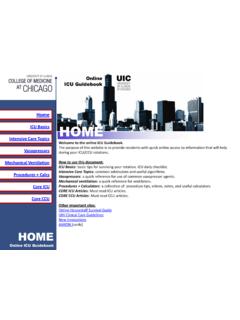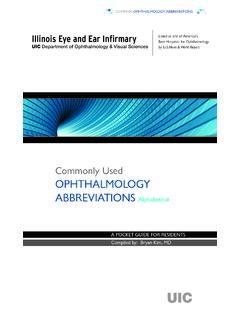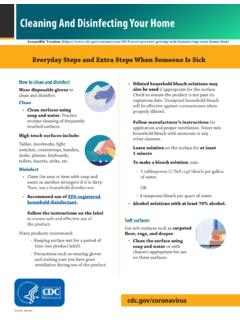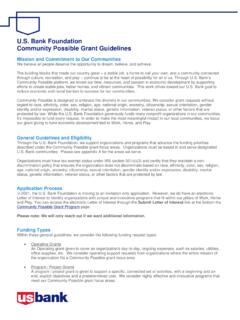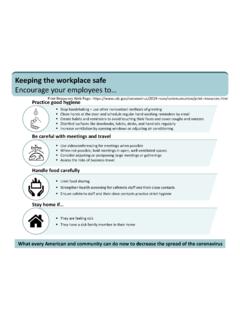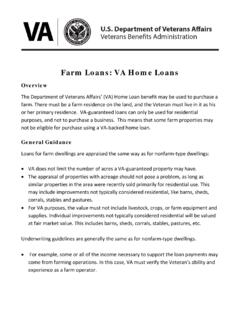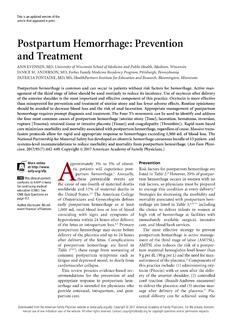Transcription of Home ICU Basics HOME - Home | Chicago Medicine
1 Online home ICU Guidebook Welcome to the online ICU Guidebook. The purpose of this website is to provide residents with quick online access to information that will help during your ICU/CCU rotations. How to use this document: ICU Basics : basic tips for surviving your rotation. ICU daily checklist. Intensive Care Topics: common admissions and useful algorithms. Vasopressors: a quick reference for use of common vasopressor agents. Mechanical ventilation: a quick reference for ventilators. Procedures + Calculators: a collection of procedure tips, videos, notes, and useful calculators. CORE ICU Articles: Must read ICU articles. CORE CCU Articles: Must read CCU articles. Other important sites: Online Housestaff Survival Guide UIH Clinical Care Guidelines New-Innovations AMION [cards] home Online ICU Guidebook home ICU Basics Intensive Care Topics Vasopressors Mechanical Ventilation Procedures + Calcs Core ICU Core CCU ICU Guidebook | Basics General Welcome to your ICU Month(s).
2 These are some general rules/guidelines to follow: Three L s to NOT DO: Lie (especially parts of physical exam that you did not do) Be Lazy Be Late These are the habits to ICU success: Be Organized Be Involved Be Efficient Be Thorough Take Initiative Take Ownership of Your patients Basics Online ICU Guidebook Progress Notes Organ based is generally the most thorough. For CCU, include cardiac studies in your note and cardiac systems in you re A/P: Daily routine / Patient care Here is a checklist that should be followed for every ICU patient: Daily Checklist Every day each person should have the following addressed: 1. Code Status 2. Sedation (held in am, when stopping, etc.)
3 3. GI Prophylaxis (most important when intubated) 4. DVT Prophylaxis 5. Fluid, electrolytes, nutrition 6. Disposition Other daily tasks to always keep in mind: Monitor I/O on EVERY PATIENT with 24h totals Know their IV access including dates central lines have been placed Duration of abx use Duration of steroid use for shock patients For Mechanically Ventilated Patients, always know the following: Date Intubated Size of Tube Vent Settings (mode/rate/volume/pressure/PEEP/FiO2) Peak/Plateau Pressure home ICU Basics Intensive Care Topics Vasopressors Mechanical Ventilation Procedures + Calcs Core ICU Core CCU Online ICU Topics ICU Guidebook ICU Topics Online ICU Guidebook Shock Shock algorithm Septic shock Cardiogenic shock Hypovolemic shock Pulm Respiratory distress ARDS COPD Asthma CV Hypertensive crisis Heart failure Hypothermia protocol Endo DKA HHS ID Antimicrobials in the ICU Vancomycin dosing Neuro Seizures Brain Death Other Sedation Acid-base review Decision Making Capacity Death Pronouncement home ICU Basics Intensive Care Topics Vasopressors Mechanical Ventilation Procedures + Calcs Core ICU Core CCU ICU Guidebook | Intensive Care
4 Topics | Shock When evaluating a patient with hypotension, always think of the following algorithm. Think of life-threatening causes and immediately rule them out. Here are some pointers: ECG to r/o AMI as a cause of cardiogenic shock CBC to r/o acute blood loss Infectious workup if sepsis is suspected Hypotension Decreased pulse pressure Cool extremities Poor cap refill Wide pulse pressure Warm extremities Good cap refill SIRS criteria? Suspected infxn? Fluid Overload Hypovolemic Septic shock Hypovolemic Shock Cardiogenic Shock ICU Topics Online ICU Guidebook Surviving sepsis Guidelines Antimicrobials Sepsis Cardiogenic Shock Hypovolemic Shock Quick Links home ICU Basics Intensive Care Topics Vasopressors Mechanical Ventilation Procedures + Calcs Core ICU Core CCU ICU Guidebook | Intensive Care Topics | Sepsis When evaluating a patient with hypotension, immediately try to assess whether you suspect sepsis, and where in the sepsis spectrum the patient falls.
5 Does he meet SIRS criteria? Does he have a known or suspected source of infection? Once you clarify this and you have ruled out other causes of shock, follow the algorithms below from the surviving sepsis campaign and initate EGDT. The original articles can be found in the CORE ICU folder. ICU Topics Online ICU Guidebook home ICU Basics Intensive Care Topics Vasopressors Mechanical Ventilation Procedures + Calcs Core ICU Core CCU Quick Links Surviving sepsis Guidelines Antimicrobials Sepsis calculator Shock Cardiogenic Shock Hypovolemic Shock ICU Guidebook | Intensive Care Topics | Cardiogenic shock ICU Topics Online ICU Guidebook Suspected Cardiogenic Shock - SBP <90 - Signs of Low Cardiac Output: oliguria, pulmonary edema, poor mental status Initial evaluation and Rapid Stabilization - Immediate ECG - Look for evidence of AMI: ST elevations, new LBBB, suspected -posterior MI - Supplemental O2 - BP Support.
6 Dopamine, Norepinephrine, Dobutamine Immediate Reperfusion Continue medical management and BP support with inotropes/pressors LV assist device, Heart transplant Immediate TTE - Evaluate LV/RV function - r/o mechanical causes: acute valvular issues, papillary muscle rupture, VSD, free wall rupture Signs of ischemia on EKG? No Yes home ICU Basics Intensive Care Topics Vasopressors Mechanical Ventilation Procedures + Calcs Core ICU Core CCU Heart Failure ACS UIH Guidelines ADHF UIH Guidelines Shock Septic shock Hypovolemic Shock Quick Links ICU Guidebook | Intensive Care Topics | Respiratory distress Concerning levels from an ABG & VS that may suggest future need for intubation.
7 * PaO2/FiO2 <300-200 * Increased PaCO2 + tachypnea * RR >30-35 * PaO2<50 on 50% or greater FiO2 * PaCO2 >55 w/ nL lung fxn ( no COPD, fibrotic lung dz) * pH < ICU Topics Online ICU Guidebook ABG Calculator A-a gradient Wells criteria for PE Decision to Intubate Asthma COPD Quick Links home ICU Basics Intensive Care Topics Vasopressors Mechanical Ventilation Procedures + Calcs Core ICU Core CCU ICU Guidebook | Intensive Care Topics | ARDS INCLUSION CRITERIA: Acute onset of 1. PaO2/FiO2 300 (corrected for altitude) 2. Bilateral (patchy, diffuse, or homogeneous) infiltrates consistent with pulmonary edema 3. No clinical evidence of left atrial hypertension VENTILATOR SETUP AND ADJUSTMENT 1.
8 Calculate predicted body weight (PBW) Males = 50 + [height (inches) - 60] Females = + [height (inches) -60] 2. Select any ventilator mode 3. Set ventilator settings to achieve initial VT = 8 ml/kg PBW 4. Reduce VT by 1 ml/kg at intervals 2 hours until VT = 6ml/kg PBW. 5. Set initial rate to approximate baseline minute ventilation (not > 35 bpm). 6. Adjust VT and RR to achieve pH and plateau pressure goals below OXYGENATION GOAL: PaO2 55-80 mmHg or SpO2 88-95% Use a minimum PEEP of 5 cm H2O. Consider use of incremental FiO2/PEEP combinations such as shown below (not required) to achieve goal. PLATEAU PRESSURE GOAL: 30 cm H2O Check Pplat ( second inspiratory pause), at least q 4h and after each change in PEEP or VT.
9 If Pplat > 30 cm H2O: decrease VT by 1ml/kg steps (minimum = 4 ml/kg). If Pplat < 25 cm H2O and VT< 6 ml/kg, increase VT by 1 ml/kg until Pplat > 25 cm H2O or VT = 6 ml/kg. If Pplat < 30 and breath stacking or dys-synchrony occurs: may increase VT in 1ml/kg increments to 7 or 8 ml/kg if Pplat remains < 30 cm H2O. pH GOAL: Acidosis Management: (pH < ) If pH : Increase RR until pH > or PaCO2 < 25 (Maximum set RR = 35).. If pH < : Increase RR to 35. If pH remains < , VT may be increased in 1 ml/kg steps until pH > (Pplat target of 30 may be exceeded). May give NaHCO3 Alkalosis Management: (pH > ) Decrease vent rate if possible . ICU Topics Online ICU Guidebook Quick Links home ICU Basics Intensive Care Topics Vasopressors Mechanical Ventilation Procedures + Calcs Core ICU Core CCU ABG Calculator A-a gradient Wells criteria for PE ARDSnet protocol Asthma COPD ICU Guidebook | Intensive Care Topics | COPD Your initial evaluation of COPD should include the following: - History, Physical, Basic labs - Chest XR - Arterial blood gas analysis Once your clinical impression of COPD is confirmed, you can initiate your treatment: - Bronchodilator therapy - Corticosteroids - Supplemental O2 if needed - Antimicrobials In this section we will discuss COPD topics specific for the ICU.
10 Antimicrobials for COPD Exacerbations Step 1 Assessment of antibiotic indications for COPD Three cardinal symptoms Increased dyspnea, increased sputum volume, increase sputum purulence Require mechanical ventilation Step 2 Antibiotic Choices: High Risk: Levofloxacin Low Risk: Azithromycin, Doxycycline Step 3 Thorough Eval for Other Causes of Exacerbation Drugs Arrythmias (Afib) Coronary Ischemia Pneumothorax Viral Infection Pulmonary embolism Mechanical Ventilation in COPD Exacerbations ICU Topics Online ICU Guidebook Quick Links Are there any reasons why the patient cannot tolerate noninvasive mechanical ventilation? Acute respiratory failure Agitation or altered mental status Hemodynamic instability Excessive secretions Unable to provide proper mask fitting BiPAP Initiate BiPAP/noninvasive ventilation in s setting where ETT can be performed if needed Endotracheal Intubation Initiate BiPAP/noninvasive ventilation in s setting where ETT can be performed if needed Yes?
